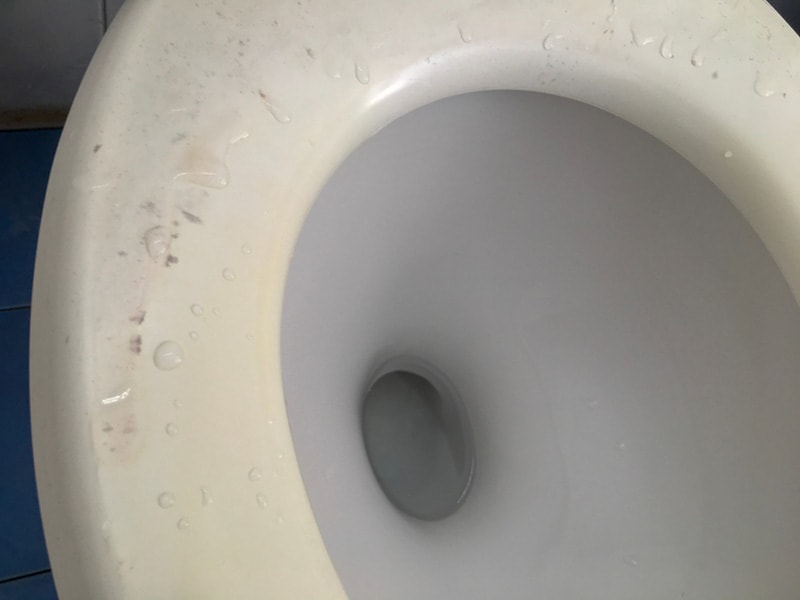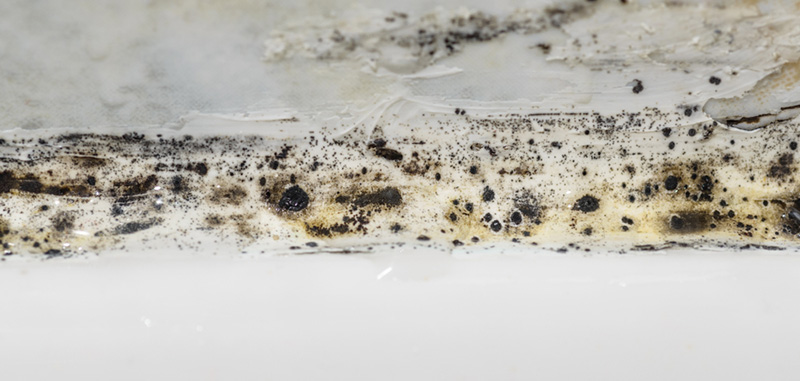There Is Black Sediment in My Toilet Bowl, What’s Going On?
-
Jana Blagojevic
- Last updated:

Toilet bowls need to be maintained properly to avoid any future problems. If you begin noticing black gunk or sediment forming on the waterline of the bowl or underneath the rim, you need to act fast to remove it. These black sediments can be the cause of hard water deposits, mold or mildew, bacteria, or contaminated water. While your toilet bowl will quickly begin looking old or neglected, several solutions will return it to its previous glory.
Read the article below to learn what may be the cause of the black sediment forming and how to handle it properly.
Causes of Black Sediment in Your Toilet Bowl
Hard Water Deposits
All surfaces in your household that regularly come into contact with hard water, such as faucets, toilet bowls, sinks, or showerheads, become susceptible and prone to residue accumulating. This is especially the case when it comes to toilet bowls. Each time you flush, the water goes down through a system of ports located under the rim of the toilet. Accumulation of hard water deposits can occur in several places in the toilet bowl, including the ports and the rim of the toilet. These accumulations will only continue to harbor bacteria and grime, which cannot be flushed.

Mold and Mildew
Mold and mildew are very common occurrences in wet or moist areas. Since the toilet bowl has many places where water deposits can build up, colonies can quickly start developing. You will begin noticing black rings or debris inside your toilet, which can be dangerous for the surrounding environment as mold can cause respiratory problems if left unhandled.
Bacteria
Bacteria are living organisms in sewer and drainage pipes and feed off waste that goes into the toilet. They can make their way into the toilet bowl during hot summer days, especially during high humidity. These bacteria will continue accumulating on the rim of the bowl, causing an unpleasant smell each time you flush.
What Causes Black Sediment?
Sediment build-ups in the toilet can be caused by several reasons, while the most common one is an old and outdated toilet tank mechanism. This mechanism has several waterproof gaskets that control the flow of the water, and if they are made of black rubber, they can decay over time and accumulate in the bowl. Other accumulating sediments in the toilet bowl can be due to a utility or supply line leak. These leaks and breaks can draw particles from the earth into the water, bringing debris and sediment with the water.
You can take a sample and test it to find out whether there is a problem with the water itself. If the water appears muddy or murky, or there are clear signs of sediment forming on the bottom of the bowl, you may have a leak in the pipes.

How to Prevent Black Sediment Build-up in Your Toilet Bowl
There are several effective methods for cleaning your toilet bowl and getting rid of the black sediment forming. The best products are vinegar, bleach, baking soda, Borax, or hydrogen peroxide. Before beginning this cleaning project, putting on protective gear is essential because you may be dealing with harsh chemicals, mold, or bacteria.
Flush the toilet and get rid of the water inside the bowl. Put your desired cleaning product on the water line, underneath the rim of the toilet, and anywhere where black sediment has accumulated. Let the product sit for one to two hours, and then begin scrubbing using the toilet brush or any other cleaning supplies you may have. Flush the toilet again to remove any leftover product.
Regular maintenance is the best way to ensure black sediment doesn’t form in the bowl again. Cleaning your toilet frequently with vinegar or baking soda will ensure a clean environment without any bacteria forming. To ensure your toilet tank is clean and free of gunk, pour in some vinegar before flushing.
Consult a PLUMBING expert
Find a plumbing specialist in your area, and get free, no-commitment estimates for your project.

Final Thoughts
This article will hopefully help you understand the cause behind black sediment forming inside your toilet bowl. The black sediment inside the toilet bowl is not a strange occurrence and most homeowners have dealt with it at least once. Most likely, you’ve got an old gasket that needs replacing, but the problem may be more far-reaching.
Featured Image Credit: Creativa Images, Shutterstock
Contents
